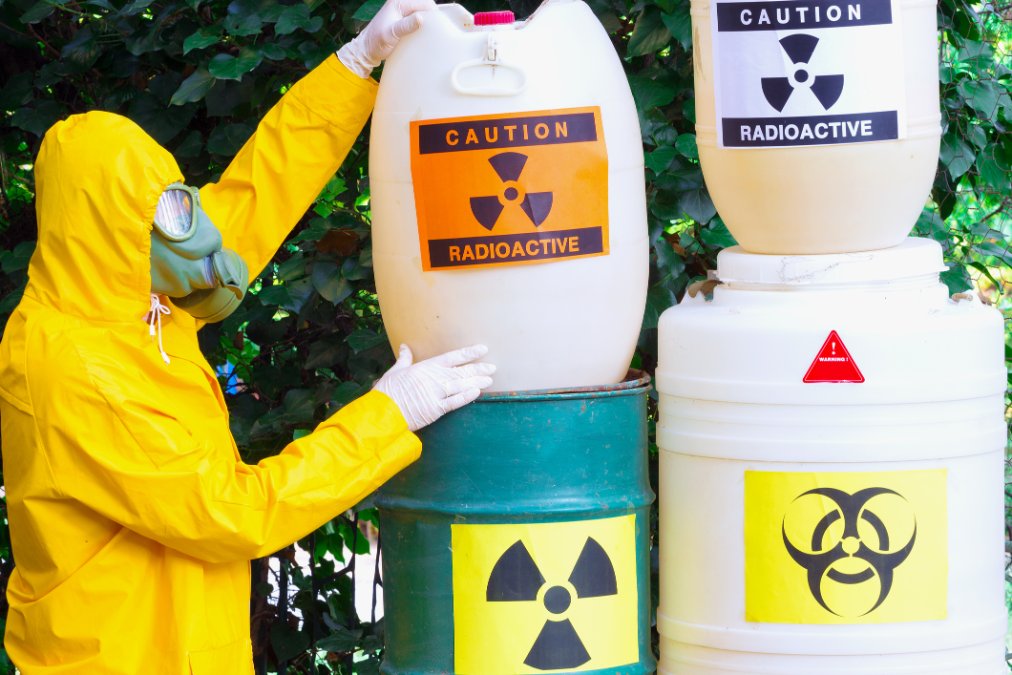According to the Environmental Protection Agency (EPA), “Hazardous waste is waste that is dangerous or potentially harmful to our health or the environment. Hazardous wastes can be liquids, solids, gases, or sludges. They can be discarded commercial products, like cleaning fluids or pesticides, or the by-products of manufacturing processes.”
Objectives:
Identify the purpose of a waste management program.
Define the categories of waste, including hazardous, universal, “potentially” hazardous, and non-hazardous.
Identify the purpose for regulating hazardous waste, which regulatory standards apply to hazardous waste management, and the three classifications of waste generators under RCRA.
Recognize the criteria for determining if “you” generate a hazardous waste.
Identify the container, labeling, and storage requirements for hazardous waste.
Identify the requirements for developing and implementing an inspection program for hazardous waste.
Identify transportation and disposal requirements for hazardous waste.
Identify the requirements for emergency preparedness and contingency planning.
Recognize the requirements for training personnel, reporting, and recordkeeping.
Identify examples of typical hazardous wastes, universal wastes, and potentially hazardous wastes.
Identify proper management and disposal procedures for typical hazardous, universal, and potentially hazardous wastes.
Recognize methods for minimizing the generation of hazardous waste and evaluating those methods.

There is a growing awareness of the dangerous side effects of hazardous waste contamination. Years ago, many industrial plants discharged heavy metals and unstable organic compounds directly into streams or injected them into the earth’s subsurface through wells, causing illness in populations with close proximity to these toxic sites.
Nitrates, phosphates, and synthetic organic compounds in pesticides and fertilizers made their way into streams and ground water as a result of agricultural applications. With the arrival of the atomic age, radionuclide contamination emerged from man-made sources, like nuclear power plants.
Hazardous waste takes many physical forms. It may be solid, semi-solid, liquid, or gaseous. It can include spent solvents as well as many pesticides and excess, discarded, or spilled chemicals.
330 American workers died last year as the result of exposure to harmful chemicals and toxic substances.
RESEARCH, BUREAU OF LABOR STATISTICS (BLS)
Hazardous waste is an environmental concern because:
- It remains intact for many years;
- It does not easily break down in the environment;
- It can be transferred among air, water, soils, and sediments;
- It can be transferred from one organism to another.
The World Health Organization (WHO) and the National Cancer Institute estimate that between 60 and 90 percent of cancers are environmentally induced by contaminates such as heavy metals and toxic chemicals.
Other chronic health effects from waste contaminants include stroke, kidney and thyroid disease, cardiovascular damage, nervous disorders, and impairment of speech, hearing, vision, and memory.
Hazardous wastes are now regulated to:
- Ensure safe treatment, storage, transportation, and disposal;
- Prevent the generation of hazardous waste through pollution prevention;
- Reduce the amount of any hazardous substance, pollutant, or contaminant released into the environment.
Treatment technologies may include:
- Distillation
- Stabilization
- Neutralization
- Incineration
- Evaporation
Avoid generating hazardous wastes by:
- Process modification (avoid the need for the hazardous material).
- Product substitution (purchase the least toxic substance available).
- Product purchase minimization (purchase minimum quantity and in small containers initially).
Waste Management Practices
- Place waste materials in their properly designated containers.
- Cover containers that hold chemicals.
- Label containers.
- Store chemicals out of the weather.
- Follow the guidelines for proper management, handling, and disposal of hazardous wastes or “unknowns”.
- Report chemical spills to your company’s Environmental or Health, Fire, & Safety Departments.
- Dispose of aerosol cans in a manner approved by state or local regulations (these normally incorporate provisions for capturing and safe disposal of any remaining container contents and disposal of the empty aerosol cans).
- Drain used oil filters and place in the marked container.
- Place used oil in bulk used oil containers.
- Never leave lids off of oil funnels, solvent containers, or other waste containers.
- Never place full or partially full aerosol cans in trash containers.
- Never place waste streams in improper, unlabeled containers.
- Avoid storing chemical containers on bare ground.
- Store chemical containers inside and on paved surfaces.
- Follow the spill release reporting guidelines for chemical releases and spills.
- For general waste management issues and questions, contact your company’s Environmental Department personnel for direction.
Precautions
- Procedures for proper response to an accidental spill or release should be in place.
- Emergency response supplies and equipment should be on hand.
- Waste receptacles should be clearly identified for the types of waste.
If you discover a hazardous material spill or release at work:
- Immediately report it to your manager, supervisor, building administrator, or company environmental organization.
- Call your company’s emergency number right away if it is life threatening or immediately hazardous.



